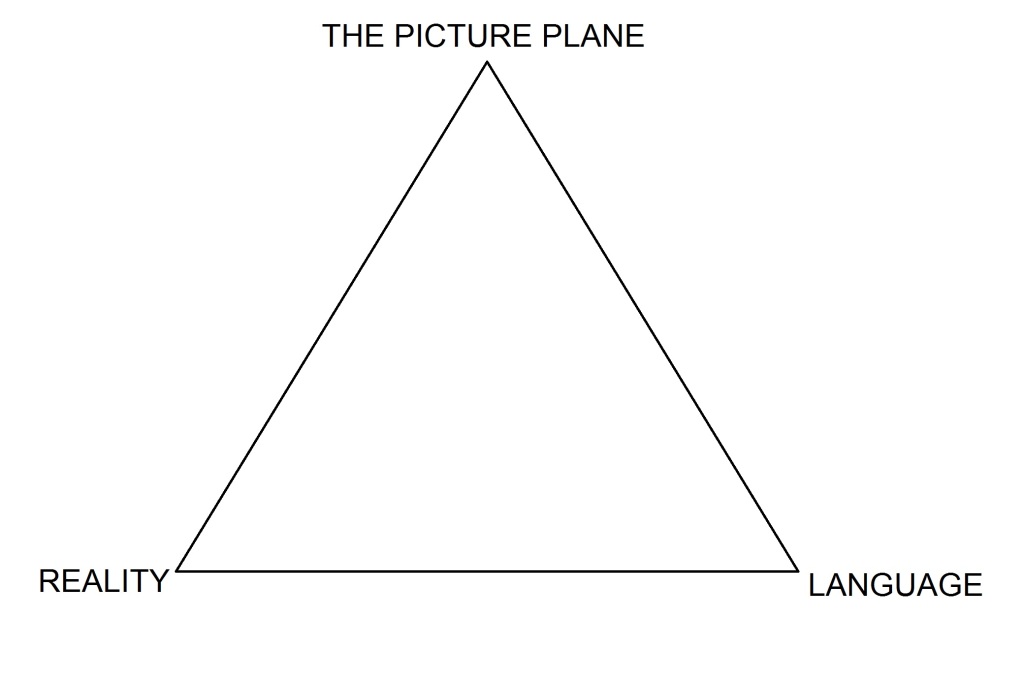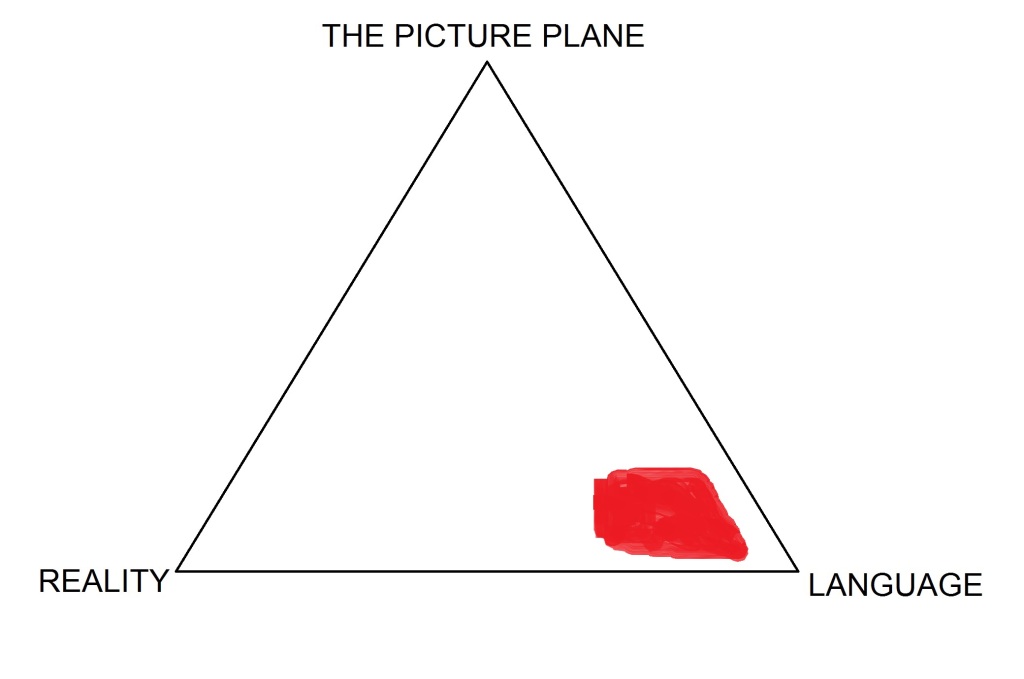In my plans to keep improving upon Sunnyville, I had to go back to the drawing board to take another look at what I created and even to look at what’s behind it. To do this, I had to take another look at all my books and refresh my memory about what I had learned.
One of the texts I own is Understanding Comics by Scott McCloud. This is a book that really needs to be read by anyone in this field. It takes a serious look at the medium.
The second chapter of the book “The Vocabulary of Comics” takes a look at icons, representation and the concepts of what icons mean in comics.
The visual aid you see here is what I’m talking about. The left corner represents reality; any sort of commercial or fine artist in this area prefers the beauty of nature and seeks to capture reality as close as they can. Realistic painters such as Rembrandt would fit in this category as would photographers and most superhero artists (DC and Marvel).
The right corner represents language; those in this area prefer ideas. Fine artists in this category would be Henri Matisse and Paul Klee. Many iconic characters of newspaper comics would be in this area of pictorial vocabulary such as Pogo, Charlie Brown, Alley Oop, Krazy Kat and so on.
The top corner is the picture plane. People who work in this area don’t try to depict any kind of reality, be it nature or ideas. They simply depict non-representational images. Abstract artists like Piet Mondrian and Jackson Pollock would fit up here. As for comics work, Mary Fleener would best occupy this area.
So when it comes to my work, where does Sunnyville stand here?
Sunnyville Stories is clearly in the lower right of the pyramid. Much of the characters depicted within are meant to be more iconic as opposed to being realistic. The same can be said about the backgrounds which isn’t surprising given my influence from newspaper comics. I don’t even try to stick to reality here as the backgrounds are mainly props to tag where the characters are; from that point onward, the characters are the show rather than the place they are at.
I prefer conveying ideas instead of reality. If Rusty and Sam were drawn realistically or photorealistically, it just wouldn’t work. Readers would pay more attention to the visual appearance of the characters as opposed to the story. What’s more is that we already have the camera for capturing reality. Since those exist, I am free to depict ideas instead of reality.
Anyway, that’s where I stand. For more information about what I’m talking about and more on the medium of comics in general, please read Understanding Comics by Scott McCloud.


